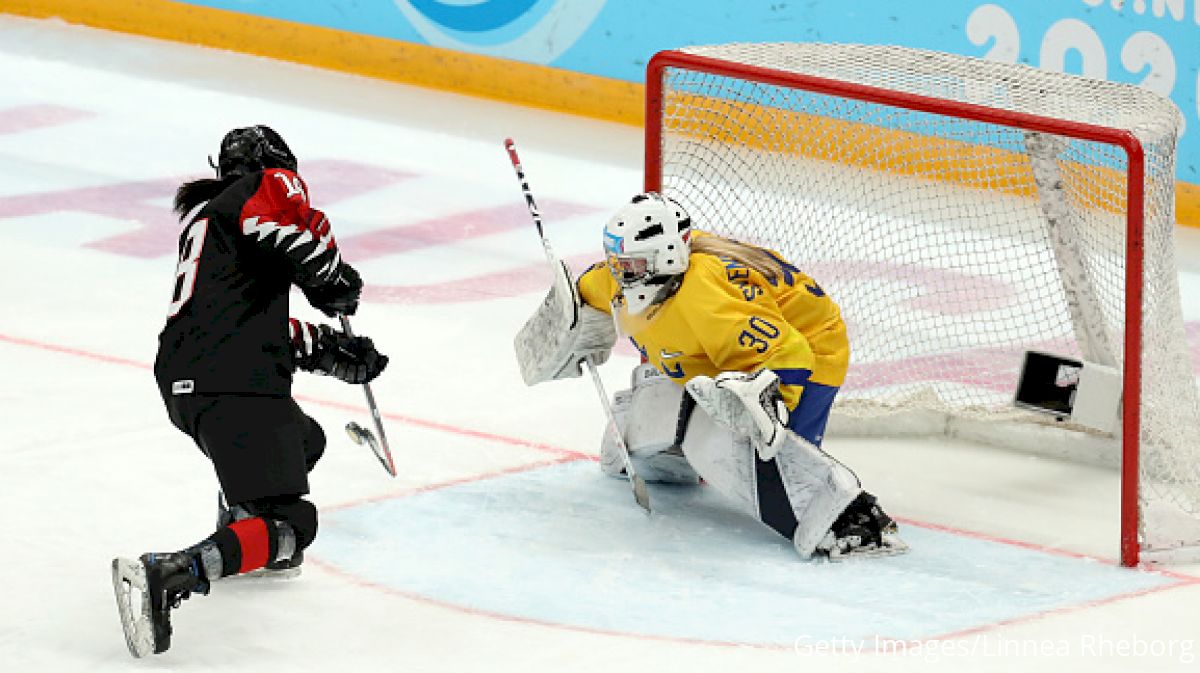What Are The Dimensions Of A Professional Hockey Goal?
What Are The Dimensions Of A Professional Hockey Goal?
A hockey goal is the size it is, so the goalie can cover most of the net, making it more difficult for the opposition to score. But what are the dimensions?

A hockey goal post has standard NHL dimensions of 6 x 4 feet.
The net's opening measures 72 inches (or 180 cm) in width and 48 inches (or 120 cm) in height. In terms of its depth, the goal is 40 inches (or 110 cm) deep. The overall net is held by a metal tube frame that measures roughly 2 inches (or 5 cm) in diameter).
Besides the NHL, the American Hockey League, high school hockey leagues and the NCAA (collegiate hockey leagues) also use these measurements.
Youth hockey or junior leagues, on the other hand, use slightly smaller hockey goal dimensions, measuring 60 inches (width), 44 inches (height), and 24 inches (depth).
Why Do Hockey Post Dimensions Have To Be Regulated?
The hockey goal's size is how it is, so that the goalie can cover most of the net, making it more difficult for the opposing team to score a point. Often, goalies are much taller than the hockey goal. Because of this, players take advantage of the wide openings to make their shots.
Due to the intensity of the sport, the hockey goals need to be durable and well-balanced. This prevents any accidents from occurring and ensures the game remains fair.
While the reinforced steel crossbars and posts make this possible, the established dimensions also help in increasing the effectiveness of the goal.
The History Behind Hockey Goals
Before the major leagues arrived at a standard measurement, hockey goals had to go through several phases of development.
During the sport's early days, the goals were merely created by arranging rocks in a certain way. Since they didn't use nets back then, the players could score from any angle and any direction, as long as it went over the determined goal zone.
Fast-forward to the 1890s, when players placed two sticks on opposite sides to clearly signify the limitations of the goal. From then on, more and more additions were introduced.
The sport soon incorporated a crossbar to strengthen the stability of the goal. Then, it established a square shape for the goal. Afterward, officials added a net to the crossbar and the side posts to catch the pucks.
Apart from catching pucks, the integration of a net also makes it easier for the players to retrieve them quickly.
The Future Of Hockey Goal Post Dimensions
Despite having a standard hockey goal size for years, many believe the dimensions of the post should be enlarged in the future to increase the goal numbers.
Compared to the 70s, 80s and 90s, where the number of goals per game averaged around 3.5 to 4, the goal average in the 2000s, 2010s and up until ranges between 2.7 and 3.
One way to improve these numbers is to make a bigger goals. Plus, since players are getting much larger now, widening the post dimensions might be a necessary move to ensure fair play.